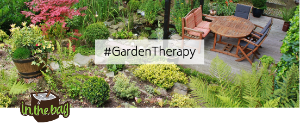The acidity or alkalinity of soil is measured by pH (potential Hydrogen ions). Basically it is a measure of the amount of lime (calcium) contained in your soil, and the type of soil that you have. Generally, soils in moist climates tend to be acid and those in dry climates are alkaline.
Balancing your garden soil pH levels is the best way to ensure a better veggie harvest. Healthy plants should be able to get all their nutrients from the soil but if the soil is too acidic or too alkaline, those nutrients won’t be available, no matter how much you fertilize.
pH is usually measured on a scale of 1-14:
- A pH of 7 indicates neutral soil
- A pH above 7 indicates alkaline soil
- A pH below 7 indicates acidic soil
Most of the nutrients your vegetable gardens need can be absorbed when the pH of your soil falls between 6.0 and 7.5.
- Below pH 6.0, some nutrients, such as nitrogen, phosphorus, and potassium, are less available.
- When pH exceeds 7.5, iron, manganese, and phosphorus are less available.
Not all plants are the same – different crops prefer different levels of acidity – for example:
- Strawberries will yield well at a lower pH of 5.5 to 6.5
- Carrots love balanced soils pH of 6 to 7
- Sunflowers thrive in soils with pH levels of 7 to 7.5
Basically, if you want a garden bed that the majority of your veggies will thrive in, you want to create soil that has a pH of 7 – 7.5.
How to test your soil with a simple soil pH test kit:
- Use a small sample of soil, taken 10-15cm from the surface, and put on a the mixing card
- Add a few drops of the indicator dye and dust with the white powder supplied with the kit.
- Wait about 30 seconds for the colour change to take effect. You will get a more accurate result if you wait a few minutes.
- Use the colour chart to match the colour of your soil samples. Each color indicates what level pH your soil is.
- If in doubt, wait 2 minutes and check again the resulting color
- Take several measurements in different spots in the garden. A minimum of six samples from different parts of your garden is a safe amount.
- A single reading may be an anomaly, so it’s good to get an idea of the average pH in a plot. If they’re all around the same, take the average and amend the soil accordingly. If one spot is very different than the rest, however, you may need to “spot treat” it.
- Record your results in a garden diary. You may need to reference your test results at a later date, as they may change over time.
- Test your soil annually to know exactly what your garden’s nutritional requirements are.
How to balance your soil’s pH
So you’ve tested your soil in six places and you’ve found out that it’s generally a pH of… whatever it is. For best results, incorporate pH-correcting amendments in the fall, to give them plenty of time to break down for spring planting.
Here’s some tips on how you can balance your soil…
If the soil is too acidic: less than 7 = low pH:
- Add horticultural hydrated lime and work it into the soil, rather than leaving it on the surface
- Sprinkle about 1/2″ of wood ash over your soil and mix it into the soil about a foot deep. This method takes small applications over several years, but it can be very effective, as well as a great way to recycle fireplace ashes!
If soil is too alkaline: greater than 7 = high pH:
- Plain elemental sulfur (or sulphur) is probably the easiest and most common way to make soil more acidic, since it’s cheap, relatively safe, and can be spread on top of the soil. Since sulfur is pretty slow-acting, you shouldn’t apply more than 2 pounds per 100 square feet at a time.
- Sphagnum Peat is a great organic solution, it adds organic matter to your soil and increases water retention. Simply work a 2” layer of sphagnum peat into your soil at least a foot deep. Larger areas will probably require a tiller.
- Add mulches and compost as it tends to make soil more acidic. Regular use of organic compost and mulches will, over time, bring the soil pH closer to the desired neutral to slightly acidic level. This is the easiest way to lower your soil pH.
- Fertilizers that contain ammonia (such as ammonium nitrate), urea, or amino acids can, over time, have an acidifying effect on soil.
Correction of an overly acid soil should be considered a long term project, rather than trying to accomplish it in one year. If the soil is excessively alkaline, you may find that you are better off to build a raised bed using topsoil purchased from a nursery. It is always best to test your soil each year and make your adjustments gradually.
Once you’re on your way with good soil pH, it’s much easier to treat mineral deficiencies if they crop up in your plants. Balancing your soil’s pH is a great first step to healthy veggies.
Contact In The Bag Landscape Products for all your landscape and gardening needs


